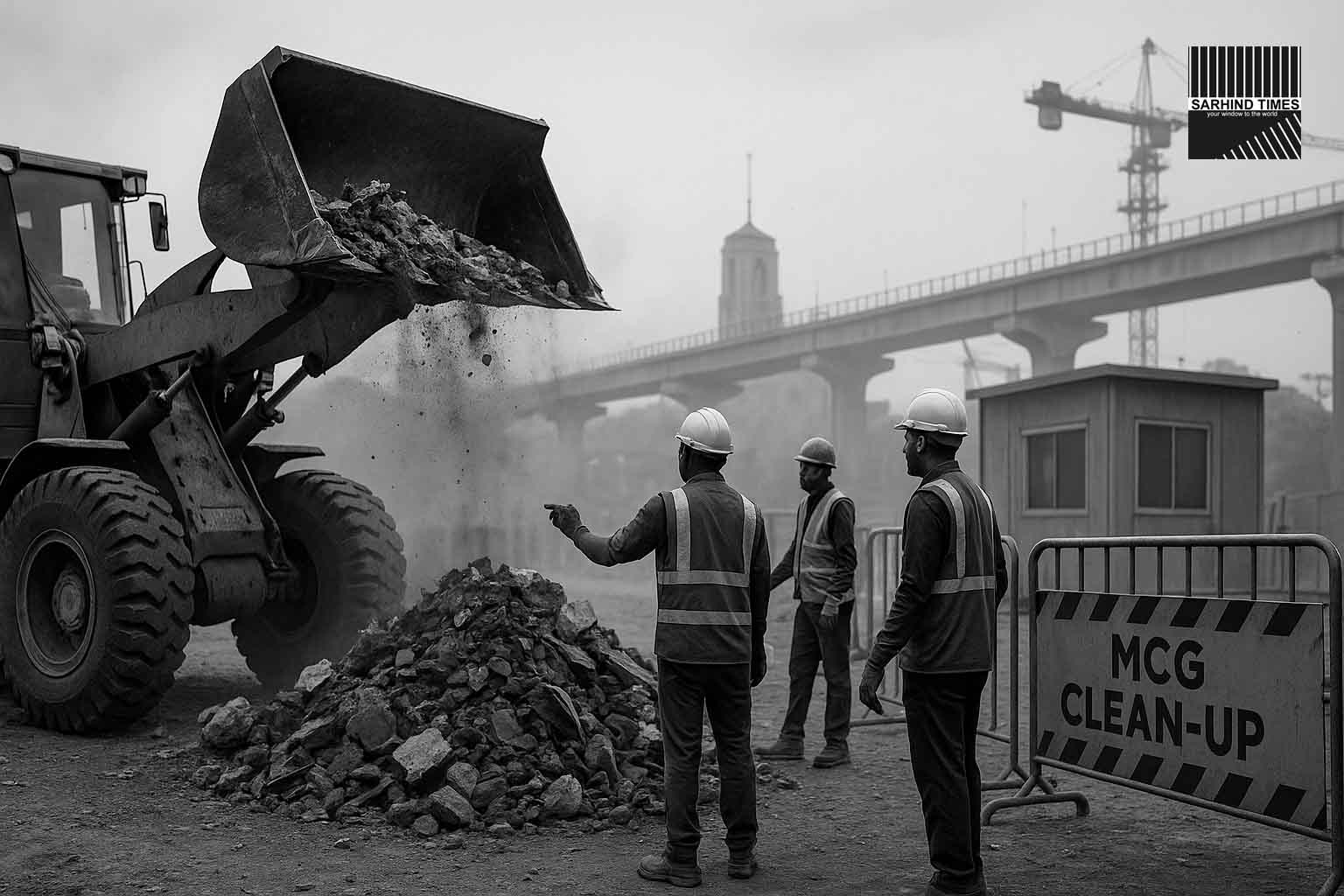A high-level review has told the Municipal Corporation of Gurugram to remove demolition and legacy waste from the Sector-10 auto-market plot to make room for a Metro casting yard—critical for pillars and slabs—by October 31. Officials say site clearance is now on the project’s critical path.
What changed overnight—and why it matters
The green signal for Gurugram Metro’s construction logistics now hinges on a very local but very tangible bottleneck: heaps of construction and demolition (C&D) debris and encroachments on the Sector-10 auto-market site, where the contractor must set up a casting yard for manufacturing Metro superstructure elements. The instruction is straightforward—clear the waste by October 31—but the stakes are larger than a tidy plot. Without a functioning casting yard, piling and precast scheduling slips, headways are hard to guarantee, and the corridor’s commissioning timeline risks drift.
Metro agencies and state departments have been aligning land and logistics for weeks. Separately, a committee meeting flagged the broader terminal and integration issues at Cyber City with the RRTS station, while also noting that HSVP has agreed to allot ~10 hectares for casting—subject to removal of demolition waste by the same October 31 date. It’s a clear signal that debris clearance is now a gating item for multiple build stages.
Where exactly is the casting yard and what will it do?
The Sector-10 auto-market land—long mired in delays and encroachments—has been identified as the footprint for the yard. Once cleared, the Metro contractor will bring in moulds, rebar cages, concreting gear, and gantries to cast piers, pier caps, girders, and slabs. Precasting off-site (rather than pouring at every pier location) is the standard way to compress schedules while keeping traffic disruption manageable. Officials said the site-clearance decision was discussed “in detail” before directing MCG to meet the Halloween-month deadline.
The choice of Sector-10 is also about logistics: adequate acreage, haul-route access to the alignment, and a buffer from dense residential pockets. Separately, reports have referred to 10 hectares being lined up for casting operations, underscoring the scale of yard operations envisaged.
The debris problem didn’t start today
For months, Gurugram authorities have been trying to get ahead of illegal C&D dumping and legacy piles. MCG launched back-to-back drives in early September, targeting key stretches and claiming meaningful tonnage cleared; yet within days, fresh mounds reappeared along busy corridors, highlighting the gap between one-time drives and sustained enforcement.
MCG has simultaneously ramped up penalties and enforcement: hundreds of challans for littering and illegal dumping, multiple vehicle seizures, and fines on bulk waste generators (BWGs) and shopfronts. The commissioner has warned of escalated action and new city-specific solid-waste plans. But environmentalists point out that designated C&D dumping points, patrolling, and processing capacity must scale alongside fines for durable results.
Why the clock is ticking
Precast schedules are unforgiving. A yard needs to be leveled, geotechnically checked, fenced, and connected to power, water, and haul roads before the first cage is tied. Once casting starts, curing cycles and quality checks dictate the daily rhythm; a week’s slip early can balloon into months by the time you hit trackwork and systems integration. That’s why the Sector-10 clean-up order—however mundane it sounds—has outsized importance for the Phase-2/City corridor that will connect Old and New Gurugram.
The moving pieces beyond Sector-10
While the casting yard is the immediate focus, the project must also reconcile terminal integration at Cyber City with the NCRTC’s RRTS station location. A high-level meeting chaired by the chief secretary saw no final consensus on whether the RRTS station should sit at Shankar Chowk, with HSIIDC flagging congestion and NCRTC pushing for close-coupled stations. A traffic impact study is in progress, and GMRL has been tasked with a policy for properties affected by the new alignment. In parallel, HSVP’s 10-hectare land allotment for yard purposes is conditional on demolition-waste removal by Oct 31—linking policy, planning, and sanitation in one line item.
Businesses vs. bulldozers: managing the Sector-10 transition
Local shop owners and garage operators worry about access, parking, and temporary closures as clean-up and yard set-up intensify. The administration’s stated approach is to map haul routes and landfill capacity to minimize disruption while fast-tracking segregation (inert vs. recyclable) to prevent re-dumping elsewhere. The optics will matter: if segregation is sloppy, waste simply boomerangs to another ward; if it’s tight—paired with policing and functioning C&D plants—the city can avoid the “clean today, heap tomorrow” cycle.
The capacity question (and why it keeps coming up)
Gurugram’s C&D generation often outpaces processing capacity. Even with an approved upgrade of the Basai C&D plant, experts estimate 1,500–2,000 TPD of waste citywide on peak days, testing both transport logistics and processing throughput. That mismatch is why mounds reappear quickly after drives, and why the Sector-10 deadline will need matching transport, plant slots, and enforcement to be credible.
What residents can expect over the next six weeks
- Visible clean-up at the Sector-10 site: mechanized loaders, tipper fleets, and on-site segregation cells.
- Traffic marshals on approach roads during peak hauling windows to keep access open for local traders.
- MCG enforcement: continued challans, vehicle seizures, and photo-verified violations, plus BWG monitoring.
- Public advisories: reminders on legal C&D disposal channels; RWAs and market associations tapped to flag violators. (MCG has leaned on geo-tagged reporting and ward-level WhatsApp groups for proof.)
What if the deadline is missed?
Every missed day can ripple through foundation works, girder launches, and block closures planned months in advance. In procurement-heavy projects, a late yard can trigger idle equipment costs and rescheduling penalties. That’s why the Oct 31 instruction lands with unusual clarity across agencies, from HSVP (land) to GMRL (execution) to MCG (sanitation/enforcement).
Bottom line
The order to clear Sector-10’s auto-market waste by Oct 31 is more than housekeeping—it’s the hinge on which Gurugram Metro’s early construction tempo will swing. If the city combines clean-up, capacity, and compliance in the next few weeks, the casting yard can lock in a production rhythm that keeps the corridor on schedule. If not, Gurugram risks trading one familiar skyline—of debris mounds—for another: a line of idle gantries waiting on a cleaner tomorrow.
#Gurgaon #GurugramMetro #UrbanInfra #WasteManagement #MCG #CAndD #Sector10 #CastingYard






















+ There are no comments
Add yours